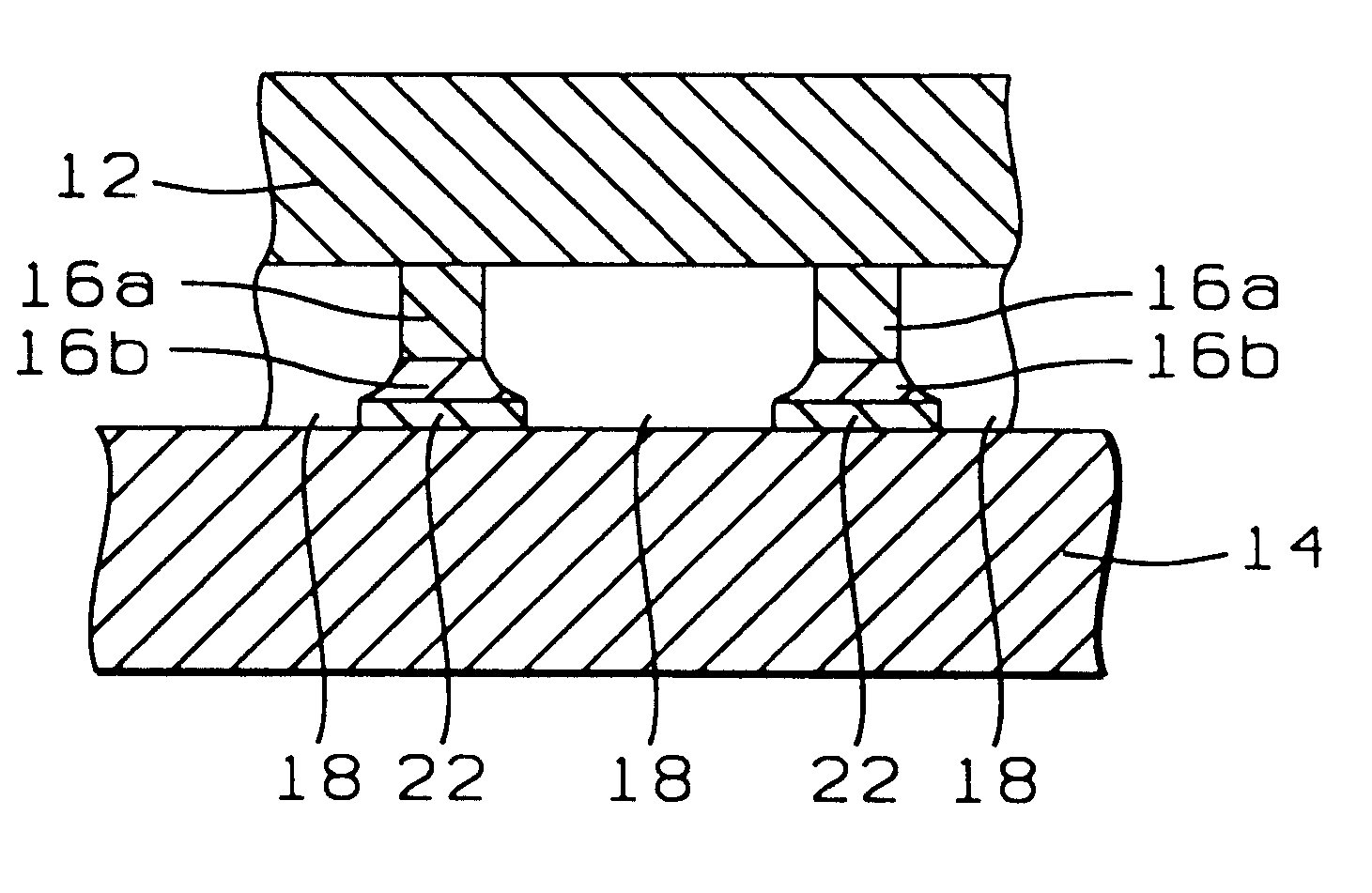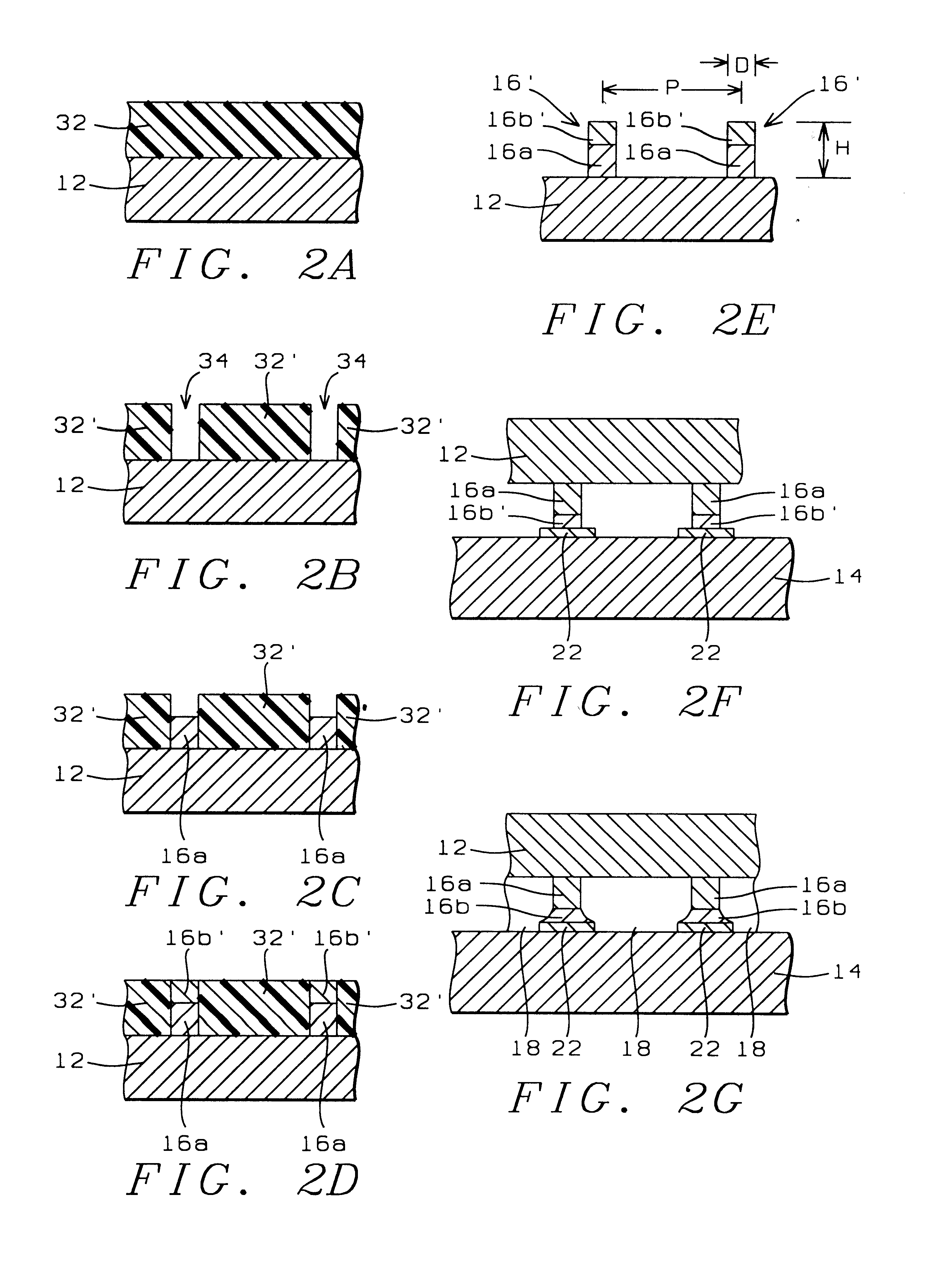Pillar connections for semiconductor chips and method of manufacture
a technology of semiconductor chips and pillars, applied in the direction of welding/cutting media/materials, electrical equipment, solvents, etc., can solve the problems of constant reduction of the dimensions of the electronic devices on the silicon integrated circuit, device malfunction, and part occupied by air or another material not as effective in absorbing alpha particles, so as to reduce the chance of chip failure and stress in the connection
- Summary
- Abstract
- Description
- Claims
- Application Information
AI Technical Summary
Benefits of technology
Problems solved by technology
Method used
Image
Examples
Embodiment Construction
FIG. 1A is a cross-sectional view of a semiconductor die in the form of a flip chip 12 connected to a substrate 14 by means of elongated pillars 16 to illustrate an embodiment of the invention. As shown in FIG. 1A, the space between the die 12 and substrate 14 is filled with an underfill material 18 such as one known to those of skill in the art to provide support and stability to the die and interconnect structure formed by the elongated pillars 16.
FIG. 1B is an exploded view of a portion 1B of the system of FIG. 1A showing in more detail and elongated pillar connecting a portion of the silicon die to the substrate. As shown in FIG. 1B, pillar 16 comprises two parts: an upper elongated portion 16a comprising copper of height H1 and a second elongated portion of height H2 comprising a lead-based solder. The junction between the two portions 16a, 16b is at 16c. The bottom part of portion 16b is enlarged compared to its upper part and has a substantial conical shape where the bottom p...
PUM
| Property | Measurement | Unit |
|---|---|---|
| Length | aaaaa | aaaaa |
| Length | aaaaa | aaaaa |
| Length | aaaaa | aaaaa |
Abstract
Description
Claims
Application Information
 Login to View More
Login to View More - R&D
- Intellectual Property
- Life Sciences
- Materials
- Tech Scout
- Unparalleled Data Quality
- Higher Quality Content
- 60% Fewer Hallucinations
Browse by: Latest US Patents, China's latest patents, Technical Efficacy Thesaurus, Application Domain, Technology Topic, Popular Technical Reports.
© 2025 PatSnap. All rights reserved.Legal|Privacy policy|Modern Slavery Act Transparency Statement|Sitemap|About US| Contact US: help@patsnap.com



